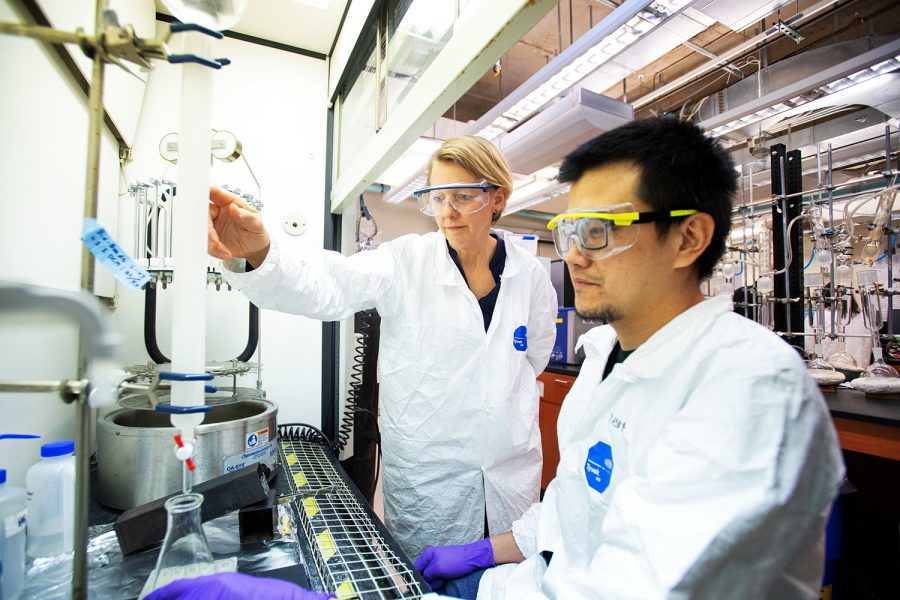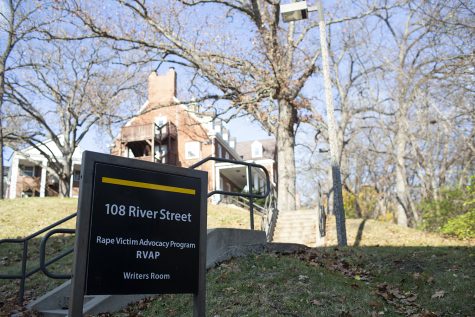UI receives $11.4 million grant renewal to study health effects of manmade chemicals
The Iowa Superfund Research Program at the University of Iowa has received a grant renewal to continue its research on polychlorinated biphenyls, or PCBs, and the impact they have on human health.
Justin Torner - Staff Photograph
Keri C. Hornbuckle Professor, Civil and Environmental Engineering Study of persistent organic pollutants (POPs) that have toxicological importance for humans and ecological systems.
April 20, 2020
Researchers in the Iowa Superfund Research Program at the University of Iowa received a $11.4 million grant renewal from the National Institutes of Health to continue studying the health effects of a set of manmade chemicals proven to be carcinogens used in old electrical equipment.
The five-year grant renewal will allow the researchers to examine airborne polychlorinated biphenyls, or PCBs, and their neurological effects and impact on fat metabolism.
The program, which has been funded since 2006, has looked at the different types of PCBs, where they come from, and how they are emitted, said its director Keri Hornbuckle. Her work focuses on the emissions of the gas phase of PCBs. She also leads work to develop new methods for precise and accurate measurement of all 209 possible PCBs compounds, she said.
PCBs are a set of chemicals that have proven to be carcinogens, and research over the last 50 years has found that they mess with human hormone systems, Hornbuckle said. The chemicals are widely prevalent and were used as flame retardants in electrical and hydraulic equipment and building materials before the sale of the chemicals was banned in the 1970s, she said. They were not, however, banned from being used, she said.
“As an engineer, we’re always trying to find clever ways to make life better, and sometimes we really goof up, and PCBs are one of those examples,” Hornbuckle said. “I really like working on solving a problem like this that’s really deeply integrated into how our society works.”
Some of her colleagues in the program are studying animal models to better understand the toxic effects of PCBs, Hornbuckle said. She then uses that data to compare what is measured from the emissions to link up the source of the chemicals, how people breathe them in, and what happens when inhaled.
The new research will allow Hornbuckle and her colleagues to look at how the PCBs break down compared to other chemicals, because the breakdown of PCBs is unknown. It’s important for the breakdown and effects of the chemicals to be known in order to protect people and figure out how to resolve the problems PCBs create, Hornbuckle said.
RELATED: UI researchers use artificial intelligence to identify cancer biomarkers
Timothy Mattes, an engineering researcher with the program, is now a project leader working on ways to mitigate airborne PCB emissions from sediments through using microorganisms and carbon materials.
The researchers will study how microorganisms can help break down and destroy the PCBs, Mattes said, even though the chemicals are not easily broken down. The carbon material will function as a delivery system for the microorganisms into the sediments, he said.
The carbon materials function both to deliver the microorganisms and to absorb some of the PCBs, he said. Once they learn how the microorganisms and carbon work together, the researchers will conduct a larger pilot-testing phase, Mattes said, another step toward making it into something that can be used to eliminate PCBs.
“[PCBs] are out there, there’s these legacy sources, sediment contamination, but there’s also these emerging sources in paint and things like that with pigments,” Mattes said.
UI occupational and environmental health Professor Hans-Joachim Lehmler, a researcher in the program, looks at the neurotoxicity of PCBs. The chemicals can be found in building materials used in some schools, so Lehmler and his team are looking at how PCBs affect the developing brain.
There’s research on developmental exposure in pregnancy or lactation and the aging brain in animal models, Lehmler said. What the researchers are interested in is answering the question of what happens to a brain that’s still developing when it’s exposed to PCBs.
Not much is known about how hazardous the inhalation of PCBs is, Lehmler said, because in the past research has focused on other forms of PCB exposure.
“If it turns out they’re not a hazardous material, then maybe you don’t need to do anything and don’t need to spend millions of dollars in each school district in the United States to either remediate the issue or help build new schools, which is not cheap,” Lehmler said. “We hope that the research will help provide additional guidance in that regard that will help.”















